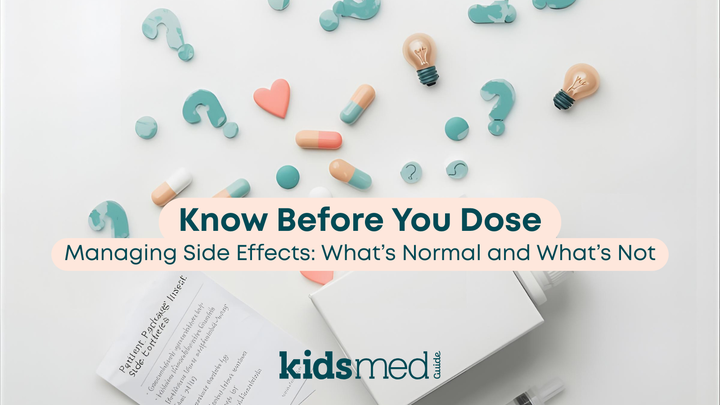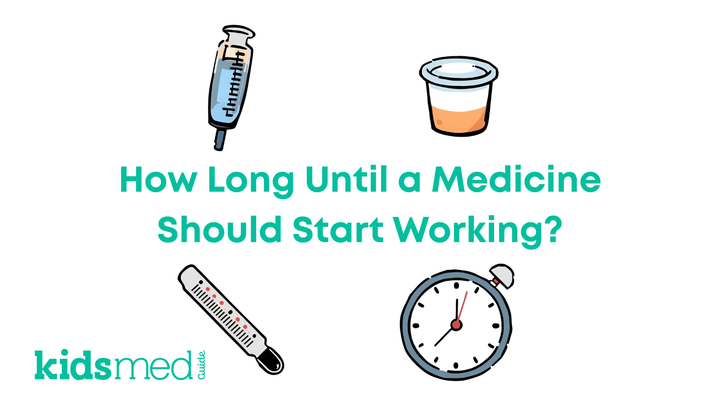How to Read OTC Medication Labels for Kids

Have you ever read the same medication label five times in a row and still didn’t understand a word? Or listened carefully to instructions at the doctor’s office, only to forget everything the moment you got home?
You’re not alone!
“Mom-brain” (and dad-brain, caregiver-brain, grandparent-brain—you name it) is a real phenomenon. Especially when our kids are sick, we’re overwhelmed, and there’s so much to keep track of.
But when it comes to OTC medication labels, understanding them is important. Safe medication dosing for children is one of the key steps in preventing errors.
This guide walks you through the over-the-counter medicine label so you can easily find the right product and dose to keep your child safe.
What Are Over-the-Counter Medications?
Over-the-counter (OTC) medicines are those that can be purchased without a prescription. They provide general instructions, but these aren’t customized for your child the way a prescription would be.
Common children’s OTC medications include:
- Acetaminophen (Tylenol)
- Ibuprofen (Motrin)
- Loratadine (Claritin)
Knowing how to read an OTC medication label helps ensure you’re giving the correct product at the right dose.
Start With the Active Ingredient
Always start by checking the “Active Ingredient” box at the top of the label. The label is usually on the back or side of the box or bottle. The active ingredient tells you what drug is in the product.
Why is this important? Because brand names can be misleading. For example, if a company sells a “non-drowsy” version of a familiar brand, it might contain a completely different ingredient.
Sometimes the active ingredient is clear from the front of the box, and other times it's hidden in a mess of pictures and descriptions of symptoms.
Match the active ingredient to what your child needs, and avoid combination products unless directed to do so by a healthcare professional. (Combination products often contain ingredients your child DOESN'T need, especially cough and cold medicine).
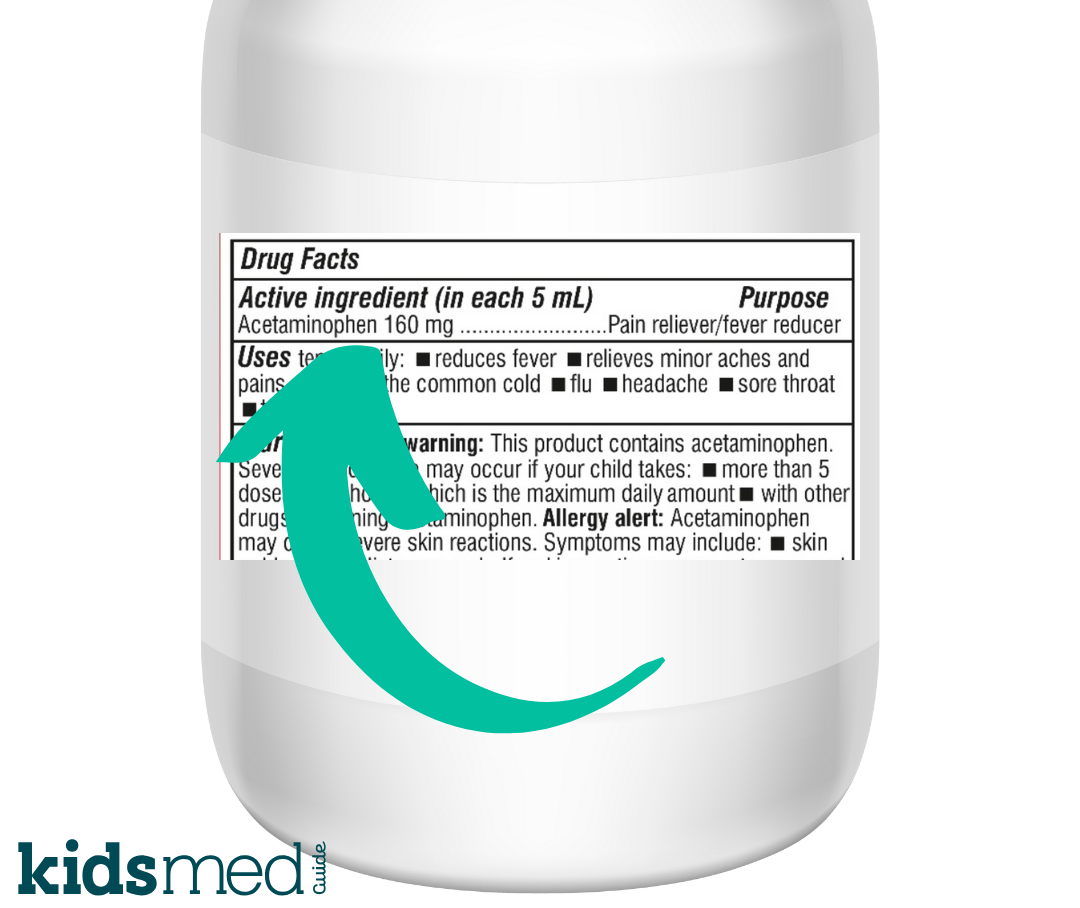
Check the Strength and Form of the Medicine
Children’s OTC medications come in many forms—tablets, chewables, liquids, and suspensions—and each has a different strength. The strength is usually listed on the front of the bottle and with the active ingredient.
Be aware of products having multiple strengths and concentrations available to purchase! Unfortunately, parents can grab a bottle of "children's liquid" and incorrectly assume it's the right product for their child's age and weight.
Take children’s ibuprofen as an example. It's available OTC as:
- 200 mg tablets
- 50 mg and 100 mg chewable tablets
- Oral suspensions: 100 mg / 5 mL or 50 mg / 1.25 mL
Notice how 5 mL of one product may not equal 5 mL of another! The 100 mg/mL suspension is intended for older kids, while the 50 mg/1.25 mL suspension is more concentrated and designed for infants (so they can get a smaller volume).
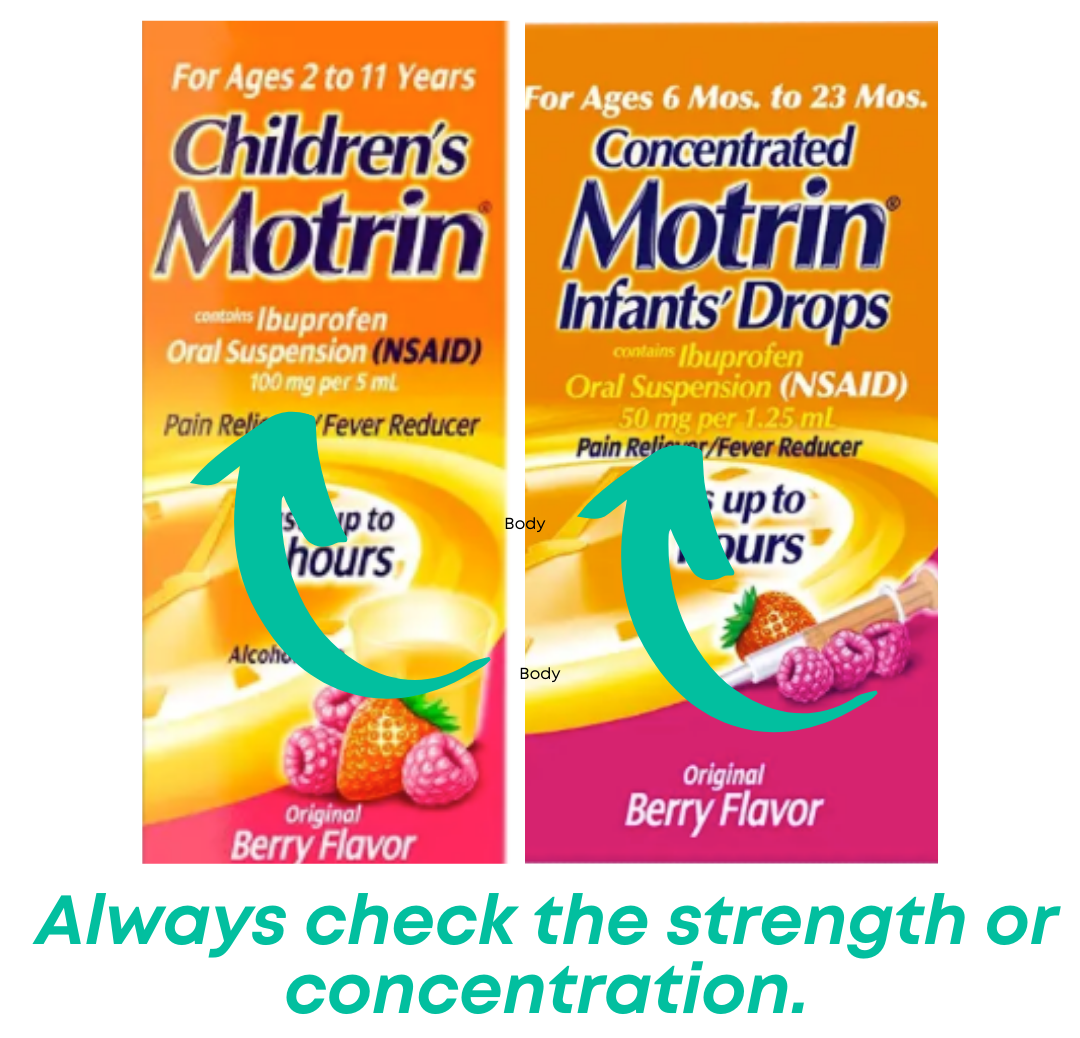
This is why it’s crucial to check both the form and concentration on the label. If you buy the children's version once, then later get the infant's version and don’t read the concentration and dosage carefully, you could very easily give your child the wrong milligram dose.
The same mix-up could happen if you had 50 mg and 100 mg chewable tablets on hand.
To prevent confusion, keep only one version of each medication in your medicine cabinet. Having two different strengths of the same drug (not just ibuprofen!) can lead to accidentally giving your child the wrong dose.
Review the Dosing Directions
The dosing instructions on OTC medication labels show if the product is appropriate for your child’s age and weight, and explain how much to give. They're usually found in a section called "Directions."
Sometimes the instructions are written in paragraph form, and other times there may be a helpful chart.

A few key tips:
- If both age- and weight-based dosing are listed, always use the weight-based dosing—it’s more accurate.
- Use the dosing syringe or cup that comes with the medicine. Kitchen spoons are not accurate.
- Double-check age cutoffs. For example, if the label says “do not use under 6 years,” don’t use it for kids under 6 years and try to guess at a dose.
Read the Warnings and Storage Information
The fine print on an over-the-counter medicine label matters. It includes:
- Side effects to watch for
- Health conditions where the drug shouldn’t be used
- Storage tips (keep in a cool, dry place—not the bathroom)
- When to contact your child’s doctor
This information can typically be found under "Warnings" or "Other Information."
It might also be helpful to review the "Inactive Ingredient" section, especially if your child has an allergy to something like dye or an intolerance to a specific ingredient.
Helpful phone numbers are often listed on the label as well!
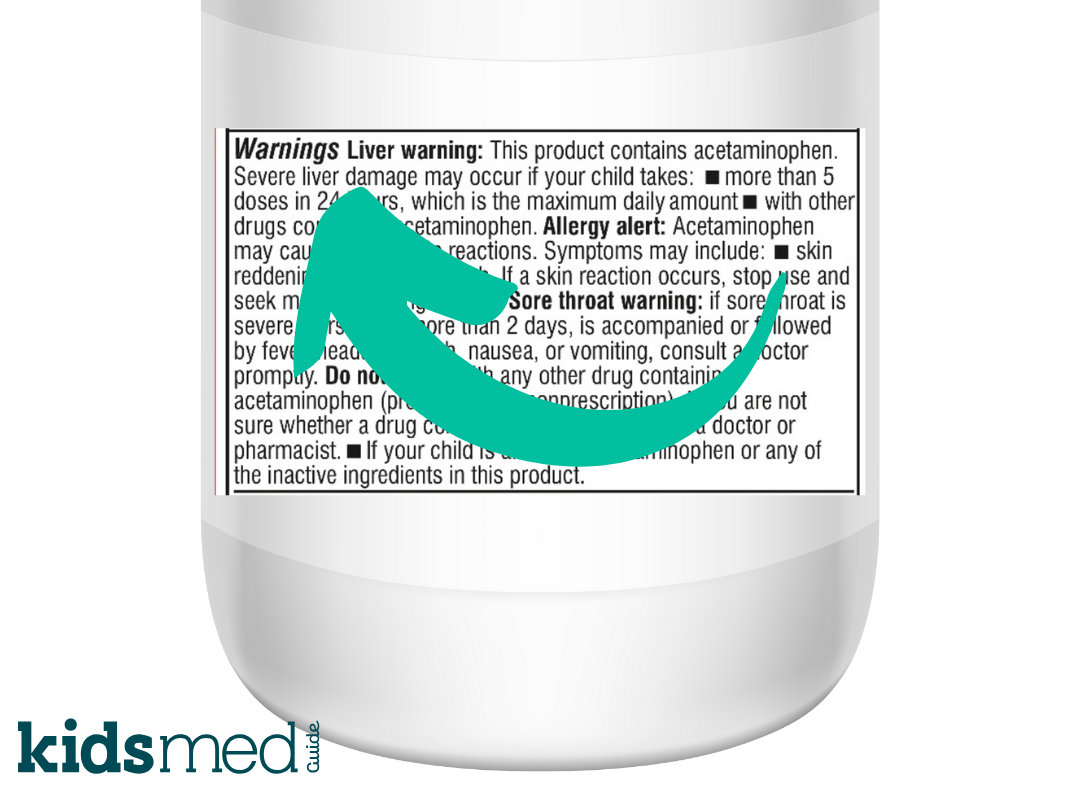
Final Takeaway
Medication labels can be confusing! There are so many options, most with eye-catching advertising and buzzwords on their packaging. But there's no need to feel overwhelmed :)
When choosing an OTC medication for kids, always review:
- The active ingredient
- The strength and formulation
- The dosing directions
- The warnings and storage tips
When in doubt, ask your pediatrician or pharmacist for help!

